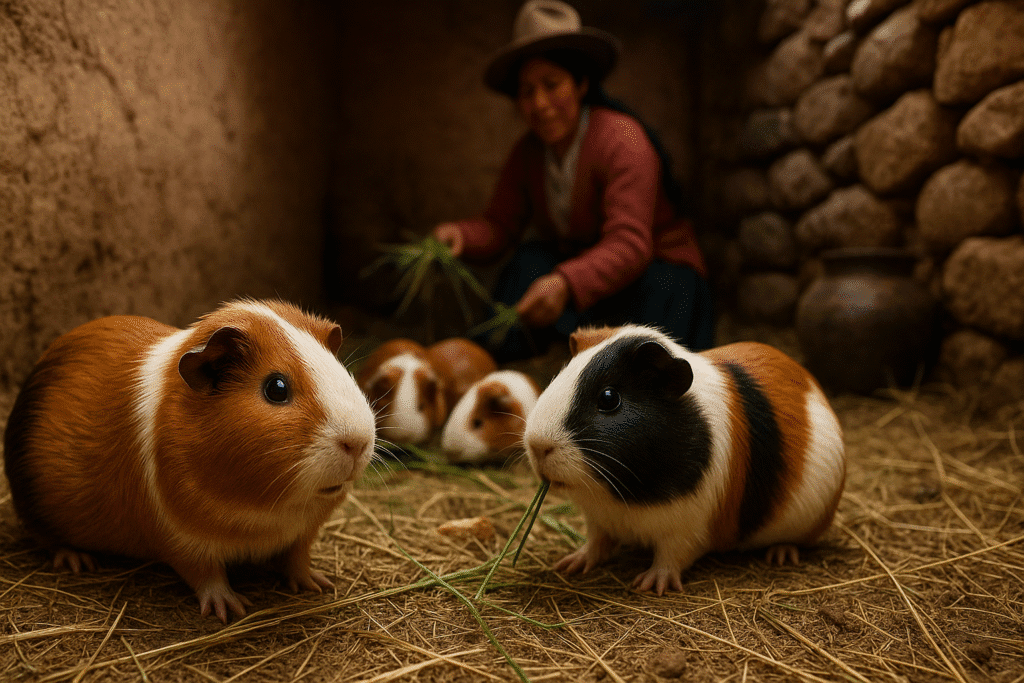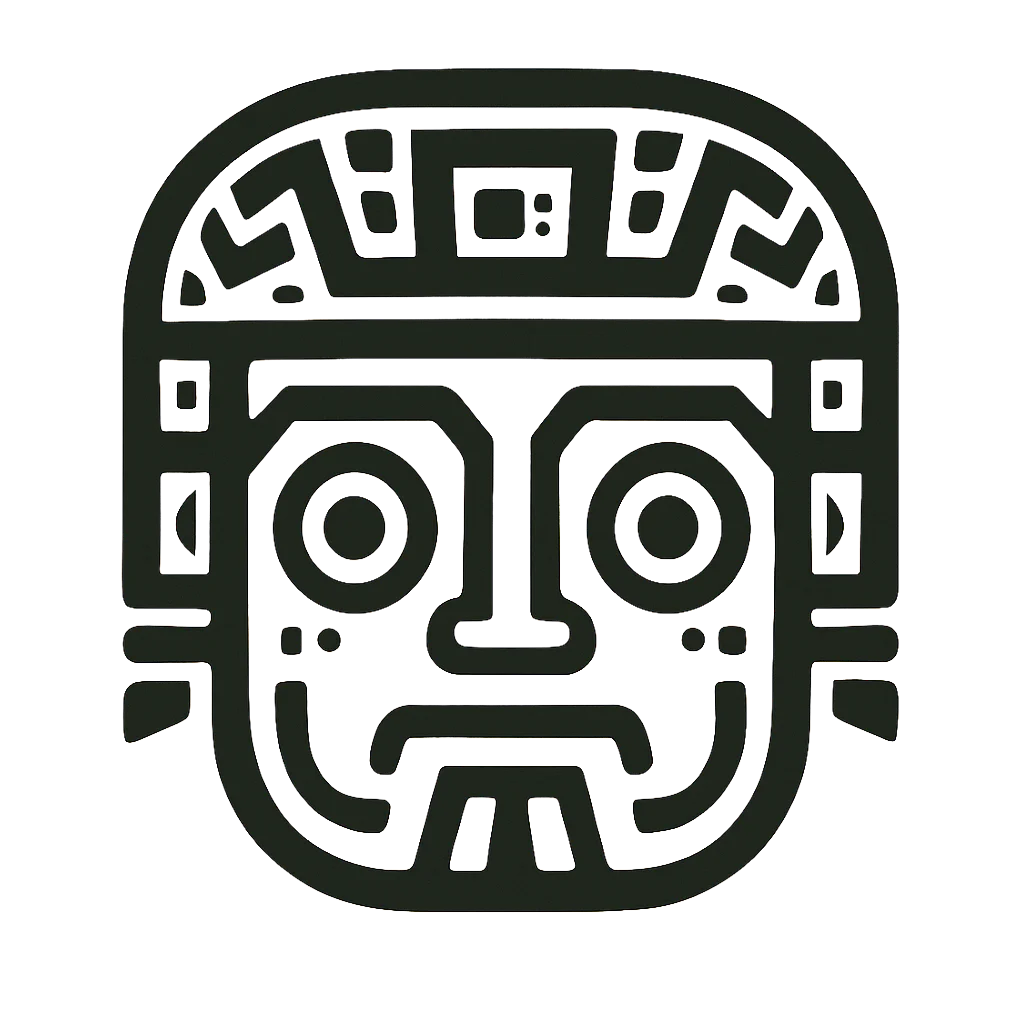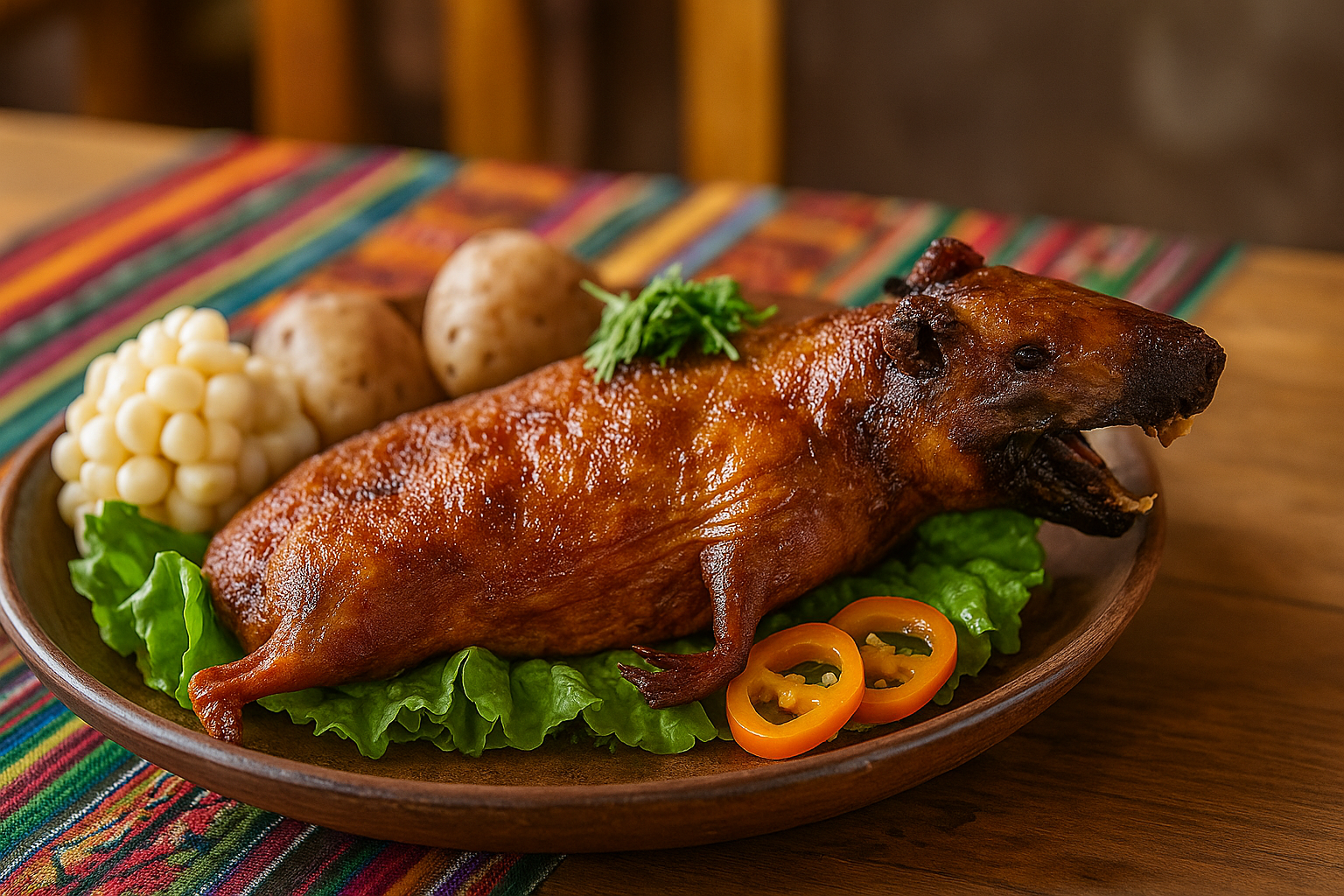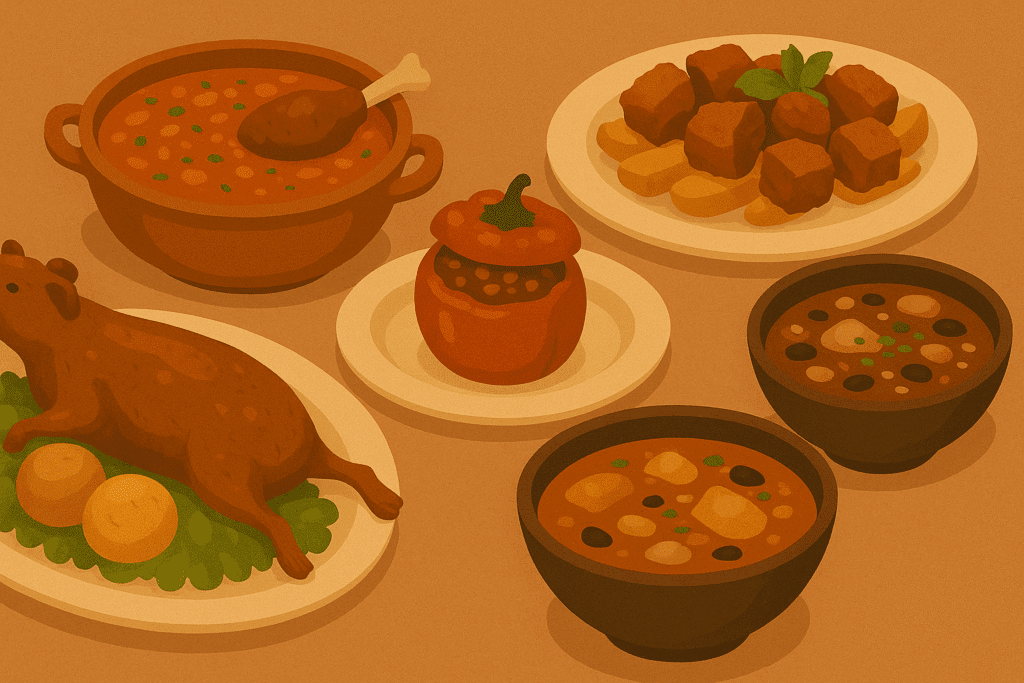Roast guinea pig is more than just a typical dish; it is a living symbol of Andean identity. With ancient roots and a longstanding presence in celebrations and rituals, this delicacy blends pre-Incan heritage with evolving cooking techniques. If you visit Cusco or southern Peru, it's almost a cultural obligation to try it. In this article, we explore its origins, traditional preparation methods, and the reasons behind its enduring significance.
Cuy (Guinea pig in English) is the domesticated Andean rodent (Cavia porcellus). Its name comes from the Quechua word for the sound it makes: "cui-cui."

📜History
Guinea pigs were domesticated more than 5,000 years ago by cultures such as the Nazca, Moche, and Wari. The Incas considered them sacred and used them in rituals and oracles. They also used them as ceremonial food.
With the arrival of the Spanish, new techniques and seasonings were introduced. Baking gained prominence in regions such as Cusco, Ayacucho, Arequipa, and Puno, where ancestral traditions merged with colonial influences. Today, baked guinea pig is a gastronomic and cultural gem.
🤔 Curiosities about the guinea pig
- It is served whole as a symbol of respect and connection with the animal.
- It appears in Marcos Zapata's Last Supper (Cusco Cathedral), where Jesus and the apostles share a guinea pig.
- Its breeding is economical and sustainable.
- At local festivals, there are contests for the “best baked guinea pig” based on its golden color, presentation, or flavor.
- There is a variation prepared over an open fire called Cuy al Palo.
📍 Culture and Symbolic Importance
More than just a dish, baked guinea pig is a living expression of Andean culture. It is eaten in:
- Patron saint and agricultural festivals.
- Baptisms, weddings, and birthdays.
- Ceremonies to give thanks to Pachamama and the Apus.
- Ancestral healing practices (such as diagnosis with guinea pigs).
Towns such as Tipón, Lamay, and Lucre in Cusco are famous for their traditional preparation methods and clay ovens.
🔬Valor Nutricional del Cuy
Guinea pig is one of the healthiest meats:
- High in lean protein (20–22%)
- Low in saturated fat and high in unsaturated fats (omega 3)
- Rich in iron, phosphorus, zinc, and magnesium
- Contains vitamins B12, niacin, and riboflavin.
- Recommended for people with high cholesterol and triglyceride levels.
Due to its nutritional value, it is promoted in programs against child malnutrition.
📌 Ingredients
This dish needs time, patience and love, like any good tradition.
| 🛒 Ingredients | 📌 Quantity for 4 diners. |
|---|---|
| Guinea pig | 4 |
| Ground huacatay | 2 tablespoons |
| Jora chicha | 1 cup |
| Ground garlic | 2 tablespoons |
| Ground yellow chili | 4 tablespoons (optional) |
| Cumin | 1 tablespoon |
| potato | 0.5 kl |
| Salt | to taste |
| Pimienta | to taste |
| Huacatay branches | (optional) |
🍲 Preparation
Although it is not cooked all together, this dish requires advance preparation. Here's how to assemble it step by step:
- In a bowl, mix the minced garlic, cumin, huacatay, salt, pepper, and chicha de jora. You can add yellow chili pepper, but it is not mandatory.
- Cut each guinea pig in half and separate the giblets (viscera) into another container. Wash each piece.
- Generously coat each guinea pig with the dressing, both inside and out. OPTIONAL: Place a few sprigs of huacatay inside the guinea pig to add aroma.
- Let it rest covered in the refrigerator for at least 4 hours (ideally overnight) so that it absorbs the flavors well.
- If you are using a clay oven, turn it on in advance. If you are using a conventional oven, preheat it to 220°C (428°F). Place the guinea pigs on a tray, open, with the skin facing up.
- Bake for 45 to 60 minutes, until the skin is crispy and golden brown.
- Wash the potatoes (peel them if you wish) and place them on another tray and bake them at the same time.
🍴How is Baked guinea pig served?
Roast guinea pig is traditionally served with one whole leg per person, accompanied by roast potatoes, roast noodles, and stuffed rocoto peppers.
✨ Conclusion
Baked guinea pig is not just a dish: it is a cultural heritage, a gastronomic ritual, and a complete sensory experience. Preparing it at home connects you with thousands of years of Andean history and honors the tradition of sharing.
If you ever have the opportunity, try it in its original context: at a local festival or visit Tipón or Lamay, where it is prepared in a clay oven and accompanied by Andean potatoes. And if you cook it yourself, do so with patience and respect: as it has been done for generations.





